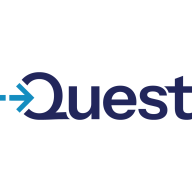


Quest KACE Systems Management Appliance (SMA) and AWS Systems Manager both serve in the systems management category. Quest KACE has the upper hand in endpoint management simplicity, whereas AWS Systems Manager excels in automation and integration with AWS services.
Features: Quest KACE Systems Management Appliance provides centralized management, Bomgar integration, and service desk ticketing. It offers single-pane endpoint management and powerful imaging capabilities. AWS Systems Manager is notable for automation options like parameter store, seamless AWS integrations, and batch task automation, making infrastructure management efficient.
Room for Improvement: Quest KACE has limitations in scalability and imaging, which can be complex for inexperienced users. Users have also suggested a need for better ease of use and support integration. AWS Systems Manager could improve through enhanced integrations, dynamic configuration options, and more intuitive interfaces with broader OS patch management.
Ease of Deployment and Customer Service: Quest KACE supports robust on-premise deployment with skilled support staff, although there are occasional complaints about slow resolutions and specialized support needs. AWS Systems Manager excels in cloud-native solutions, offering scalability easily for AWS users, though its support may lack comprehensiveness without premium plans. Quest KACE users appreciate the personalized customer service, whereas AWS Systems Manager users often rely on both community and AWS professional support.
Pricing and ROI: Quest KACE Systems Management Appliance is praised for transparent pricing and significant ROI through time-saving automation, although it might seem costly for smaller setups. AWS Systems Manager offers value through its close integration with AWS, offering nearly free usage with EC2 instances but may incur additional AWS service costs. Both solutions provide operational efficiencies and reduced labor costs, with AWS often minimizing infrastructure costs through automation.
Everything we've gained from it makes my job easier day after day, and I see value in it as an engineer.
Microsoft Intune not only saves costs by reducing the number of personnel needed but also offers a comprehensive solution for managing laptops, applications, security, individual access, and enrollment.
Importantly, when someone leaves the company, it helps protect document access on their devices.
The return on investment is seen in the quick access to information, good inventory management, and efficient systems management.
When a support ticket is submitted, it directly reaches someone with Intune support expertise.
When I contacted Microsoft, they had the same expertise, if not more, which is phenomenal because I felt heard and my problem was solved.
Sometimes, the support provided is excellent, and the representative is knowledgeable, while other times, the service needs improvement.
I would rate the customer support for Quest KACE Systems Management Appliance (SMA) as a 10.
The customer service is very good, providing quick customer support in Spanish.
The scalability of Microsoft Intune is ten out of ten.
Ideally, we want to automatically segregate devices based on user properties like primary use, but currently, dynamic groups seem limited to device properties.
It supports organizations with 200 endpoints and those with more than 15,000 endpoints.
The product is very scalable as it supports 10,000 thousand endpoints with just one appliance.
We have outgrown the size of one KACE appliance and are now running two.
We have not experienced downtime, bugs, or glitches.
It appears Microsoft Intune undergoes changes without informing customers.
Microsoft Intune has been very stable.
Features like unlocking devices sometimes fail, and the support offered for other operating systems is insufficient.
There are communication issues, so you might start working with a feature without knowing if it will be deprecated six months from now.
Many third-party companies offer single-pane-of-glass reporting that shows you what your update environment looks like, how your patch is doing, application status, etc., but Intune's reporting is not intuitive.
Currently, we have to go into each org to deploy applications when we need them all across the university.
The user interface needs improvement as customers have mentioned they do not like the interface since it is not an SMA-based interface.
Introductory professional services, like a fast-track service, were included with our E5 membership, and there have been no additional costs.
The Intune suite and add-ons, such as batch management and remote help, are costly.
It costs approximately forty euros per user per month.
While using AWS Systems Manager, we continually monitor to optimize costs according to our use case, time, and frequency.
The pricing is in the middle range of the market, not too expensive but not the cheapest either.
My experience with pricing, setup cost, and licensing for Quest KACE Systems Management Appliance (SMA) is that, hands down, it beat all of the others in simplicity and pricing.
Intune excels in configuration and compliance management for Windows 10, ensuring devices receive timely updates and adhere to organizational standards.
Dynamic groups allow us to set conditions for automatic membership, eliminating the need for user intervention or manual review and ensuring a seamless workflow.
Windows Autopatch is the most valuable because it removes the burden of patch management.
AWS Systems Manager's most valuable feature is its ability to dynamically export and import values in various AWS accounts.
Scripting has saved us hundreds of hours over the years when patching these vulnerabilities compared to how we did it before.
The most valuable features include simplicity, which makes systems management easier and faster, especially for device management.
| Product | Market Share (%) |
|---|---|
| AWS Systems Manager | 9.7% |
| Red Hat Ansible Automation Platform | 16.0% |
| Microsoft Configuration Manager | 11.5% |
| Other | 62.8% |
| Product | Market Share (%) |
|---|---|
| KACE Systems Management Appliance (SMA) | 1.1% |
| Kaseya VSA | 18.2% |
| NinjaOne | 13.5% |
| Other | 67.2% |



| Company Size | Count |
|---|---|
| Small Business | 116 |
| Midsize Enterprise | 46 |
| Large Enterprise | 152 |
| Company Size | Count |
|---|---|
| Small Business | 6 |
| Large Enterprise | 7 |
| Company Size | Count |
|---|---|
| Small Business | 8 |
| Midsize Enterprise | 20 |
| Large Enterprise | 15 |
Microsoft Intune provides centralized management of mobile devices and applications, ensuring security, compliance, and productivity through integration with Microsoft services like Microsoft 365 and Azure Active Directory.
Organizations use Intune for managing mobile devices and applications, enhancing security and compliance across platforms. With features like single sign-on, conditional access, and zero-touch deployment via Autopilot, it facilitates efficient operations. Intune's scalability, easy enrollment, and capabilities such as remote wipe support diverse device management, offering robust data protection and efficient operation. Despite its features, improvement areas include reporting, compatibility with non-Microsoft devices, and better support for macOS and Linux devices.
What are the key features of Microsoft Intune?
What benefits should users look for in reviews?
In industries such as finance, healthcare, and education, Microsoft Intune is implemented to ensure secure and compliant device management. Companies leverage its capabilities to deploy security policies and manage both corporate-owned and BYOD environments, facilitating a unified approach to data protection and compliance.
AWS Systems Manager is a management service that helps you automatically collect software inventory, apply OS patches, create system images, and configure Windows and Linux operating systems. These capabilities help you define and track system configurations, prevent drift, and maintain software compliance of your EC2 and on-premises configurations. By providing a management approach that is designed for the scale and agility of the cloud but extends into your on-premises data center, Systems Manager makes it easier for you to seamlessly bridge your existing infrastructure with AWS.
Systems Manager is easy to use. Simply access Systems Manager from the EC2 Management Console, select the instances you want to manage, and define the management tasks you want to perform. Systems Manager is available now at no cost to manage both your EC2 and on-premises resources.
KACE Systems Management Appliance offers integration capabilities, efficient image deployment, and comprehensive asset management. It supports centralized management across diverse devices and locations, simplifying IT processes and enhancing security.
KACE Systems Management Appliance provides single-pane visibility for endpoint management, mass software deployment, automated patch management, robust scripting, and detailed inventory tracking. It streamlines IT management and improves cyber-security compliance through remote software updates and centralized IT request handling. Despite struggles with scalability and the need for interface improvements, it enables efficient device imaging, script automation, and network management through detailed reporting. Organizations find it effective for software deployment, asset management, and endpoint monitoring, serving thousands of IoT devices and desktops.
What are the key features of KACE Systems Management Appliance?In healthcare, KACE Systems Management Appliance is used for maintaining device compliance and security standards. Educational institutions benefit from its capabilities to manage large numbers of endpoints across campuses. In finance, it aids in strict compliance requirements through automated patch management and detailed reporting. Retail sectors leverage its asset management features to streamline operations across numerous locations.
We monitor all Configuration Management reviews to prevent fraudulent reviews and keep review quality high. We do not post reviews by company employees or direct competitors. We validate each review for authenticity via cross-reference with LinkedIn, and personal follow-up with the reviewer when necessary.